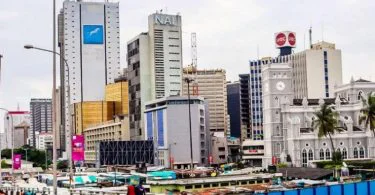In Nigeria, dams and reservoirs serve multiple purposes, including but not limited to agriculture, water supply, and hydroelectric power generation. Especially in the arid north, where precipitation is scarce, they are crucial. The Niger Dams Project consists of three dams and reservoirs constructed on the Niger and Kaduna rivers in the latter half of the twentieth century in Kwara, Niger, and Kebbi in northwest Nigeria. The first of the dams were erected at Kainji in 1969. The states around Kainji Lake rely on it as a reservoir for irrigation and fishing initiatives. The tourism business on the lake’s western coast has been boosted by Lake Kainji National Park, which features the Borgu and Zugurma game reserves. Dam construction at Jebba and the accompanying hydroelectric power plant was finished 103 kilometres (64 miles) from the Kainji Dam in 1984, and dam construction at Shiroro Gorge on the Kaduna River, west of Bida in Niger state, was completed and put into operation in 1990.
Research showed that 323 different dams of varying sizes have been built and are currently in use across Nigeria. Their combined volume is more significant than 30109 m3 in the Sudano-Sahelian region, where 85% of the country’s more significant dams are situated. Seventy-nine per cent contain domestic and industrial water supply components, while 33% have irrigation as a primary purpose to which the stored water is placed; 29% are for fisheries, 16% for recreation and 4% for hydroelectric power generation (HEP). The water levels of the Niger and Kaduna rivers are regulated by the three major hydropower dams currently operational. The combined operating capacity of the Kainji, Jebba, and Shiroro dams is 18.6 billion cubic metres (660 billion cubic feet), and their combined power capacity is 1920 MW. Nigeria’s dams can be classified into several categories: structure, age, purpose, etc. Small dams dominate, with medium dams in second place and huge dams in third place. This is because of the high price, high demand, and limited supply of suitable land for such developments. Dams in Nigeria can be found in the northwest, the northeast, the centre, the south, the southeast, and the southernmost regions of the country. Due to neglect, several of these dams have experienced failures in recent years, both operationally and structurally. Conclusions Land availability, purpose, water need, ecological variables, and government policy were identified as essential determinants in the siting of dams in Nigeria.
Ede-Erinle Reservoir (Osun State)
The Erinle River is a tributary of the Osun River in Osun State, Nigeria, entering from the north near Ede just below the Ede Dam. The new Erinle Dam is upstream. Two dams supply Osogbo with water. Untreated and treated water pose health risks. Erinle was a Yoruba hunter-turned-orisha. He is claimed to have led the first Olobu of Ilobu to Ilobu and safeguarded the town from Fulani attacks. He’s a hunter, herbalist, and farmer. Legend says that he sank into the ground near Ilobu and became a river. He is well-known across Yorùbáland. Erinle’s cult is located in Oyo Empire towns. His shrines have Erinle River stones. The name may come from Erin and il or Erin and ile (house). South of Offa, the Erinle River begins. It and the Oba River, which springs north of Ogbomosho, are Osun River tributaries. Both residential, commercial, and industrial locations along the Erinle River produced untreated garbage in 2012. Farm fertilisers and pesticides polluted it. Old and new dams on the river feed Osogbo, the state capital, with water. Malaria and diarrhoea are common in Osogbo, especially in high-density residential areas with public tap water.
Asejire Reservoir (Oyo State)
About 30 kilometres east of Ibadan, you’ll find the Asejire Reservoir in Oyo State in southwestern Nigeria on the Osun River. The watershed region is entirely off-limits for agricultural use, and trees have been planted along the riverbanks to prevent erosion and siltation from occurring. In the late 1960s, construction began on the reservoir. Because there is an abundant water supply, the reservoir stays full throughout the year. Raw water is drawn from the reservoir and delivered to the Ibadan water treatment plants at Asejire and Osegere. The water supply project was finished in 1972, and it has a capacity of approximately 80 million litres per day; of this amount, roughly 80 per cent is used for uses within the home.
Bakolori Dam (Sokoto State)
Bakolori Dam is in Nigeria’s Sokoto State. The reservoir was full by 1981. It’s a significant reservoir on the Sokoto River, which feeds the Niger River. The dam delivers water to Bakolori Irrigation. The dam’s 8,000-hectare reservoir extends 19 km upstream. Many peasant farmers were displaced by dam building without compensation. Many people died in protests against job loss. The project is a classic failure. The Sokoto River flows through northern Nigeria’s Sudan Savannah. June–September annual rainfall ranges from 500 to 1,300 mm. Before the dam was built, roughly 50,000 farmers grew rice and sorghum in the rainy season and onions, garlic, and tomatoes in the dry. Shadoof farmers lifted river water for irrigation channels or ponds. Purdah women don’t work in the field but have ownership rights and help the process—non-secluded women’s farms. Most lands were owned communally without proper records. Subsistence farmers in the area feared risk more than profit. The demand for a stable water supply was one reason for building the dam.
Challawa Gorge Dam (Kano State)
Challawa Gorge Dam is located in Kano State, 90 km southwest of Kano city. It’s a significant reservoir on the Challawa River, a tributary of the Hadejia River’s Kano River. Kano State’s Water Resources and Engineering Construction Agency launched the Challawa Gorge reservoir project, but the Federal Government funded it. The dam is owned and administered by a federal agency. Julius Berger Nigeria completed the rock-fill dam in 1990-1992. It is 42 metres high and 7.8 kilometres long. The dam holds 904,000,000 m3. The watershed is 3857 km2. The dam was built to generate hydropower and may have a 3MW average capacity – more in the rainy season and less in the dry. However, delivering the power would cost far more than current retail pricing, and how to finance the project needs to be clarified.
Dadin Kowa Dam (Gombe State)
The Dadin Kowa Dam is in Gombe State, Nigeria’s northeast. The dam, 35 km east of Gombe town, offers drinking water. The federal government completed the dam in 1984 to provide irrigation and energy for the Gongola sugar plantation. The reservoir, with a water capacity of 2.8 billion cubic metres and a surface area of 300 square kilometres, could be a source of fish. The reservoir displaced 26,000 people with little resettlement aid. The reservoir is suspected of breeding river-blinding black flies. CGC Nigeria, a Chinese corporation, built the N8.2billion water supply project during Governor Mohammed Danjuma Goje’s administration. In 2010, it provided roughly 30,000 cubic metres daily, which was piped to storage reservoirs in Gombe and settlements along the way. In August 2001, the federal government said it would spend $32 million to finish Dadin Kowa Dam. In March 2009, N7 billion was committed to finishing the dam’s hydroelectric component and N500 million to complete the canal, which would irrigate 6,600 hectares of agriculture. Governor Goje indicated in August 2009 that channels would cost less than N600 million. After the government prioritised completion in 2016, the ministry finished the dam in August 2021. As of September 2021, the Ministry of Power still needed to enable full use of the dam’s energy as part of the grid.
Goronyo Dam (Sokoto State)
Goronyo dam impounds the Rima River in northern Nigeria’s Sokoto State. It opened in 1984. The 21-m-high, 12.5-km-long dam is sand-filled. It’s 976 million cubic metres. The dam will help regulate floods and release water for the Zauro polder project in Kebbi State. Governor Aliyu Magatakarda Wamakko requested the Feds to finish the irrigation project in August 2009. Alhaji Bello Goronyo, the Sokoto State Assembly Minority Leader, stated N4 billion was needed to complete canalisation, but only N600 million was supplied in 2009. In late August 2010, rainstorms flooded the dam. To lessen failure risk, the gates were opened on September 1 2010, flooding Kagara. The dam’s spillway failed on September 8, triggering significant flooding. The flooding event may be part of a climate change pattern of higher temperatures and heavy rainfall.
Ikere Gorge Dam (Oyo State)
Ikere Gorge Dam is a significant earth-fill dam in Iseyin, Oyo State, on the Ogun River. The reservoir holds 690 million m3. General Olusegun Obasanjo’s military regime started the dam in 1983. The dam was supposed to generate 37.5 MW of energy, supply water to Lagos, and irrigate 12,000 hectares of land. The dam was built in 1982/1983, but military regimes abandoned it. In 2004, the UN reported that all five proposed irrigation projects still needed to be implemented. The project used a difficult-to-manage sprinkler system that required farmer training.
Jebba Dam (Niger State)
Nigeria’s Jebba Hydroelectric Power Station is located on the Niger River. Its 578.4 megawatts can power 364,000 households. The facility commenced commercial energy production in 1983 and was commissioned in 1985. The Jebba Power Station lies 62 miles downstream of the Kainji Dam and 25 miles southwest of Mokwa, the nearest city. This lies 256 km southwest of Minna, Niger State’s capital. The power station is on the Niger River at the boundary of Niger and Kwara states, 91.5 km (57 mi) northeast of Kwara’s capital, Ilorin. Jebba Dam is 72,917 feet above sea level. The Federal Government of Nigeria’s power station has six 96.4-megawatt turbines for 578.4 MW. Mainstream Energy Solutions Limited, an independent power firm, operates and maintains this power facility. Mainstream energy also owns the 760-megawatt Kainji Hydroelectric Power Station, 100 km upstream of Jebba. As of January 2021, five apartments are available. A fire in April 2009 rendered the sixth-generation unit useless.
Jibiya Dam (Katsina State)
Jibiya Dam is in northern Nigeria’s Katsina State. It’s a 23.5-m-tall, 3,660-m-long earth-fill structure with a geomembrane liner and a 142-million-m3 capacity. The 1987-built dam supports agriculture and water delivery. Except during the wet season, the dam site is sub-desert. The Gada river flows four months a year, with a 400 km2 catchment area near Jibiya. Due to the sandy surface soil, a flexible impermeable liner was employed to respond to settling or deformation. The dam’s condition was graded “excellent” in 2004; no instrument measurements had been taken since 1994 due to operator inexperience. In 2007, the dam wasn’t used for irrigation due to fuel scarcity. Gada River flows from Nigeria to Niger and back. Historically, eight months were dry. Regulated flow has improved Niger’s water supplies.
Kafin Zaki Dam (Bauchi State)
The Kafin Zaki Dam is a contentious project to build a reservoir on the Jama’are River in Bauchi State, Nigeria. The 11-kilometre-long dam would be zoned earth fill. It could have a 15 MW hydroelectric plant. The reservoir would be the second largest in Nigeria after Kainji Dam. It would irrigate 120,000 hectares of cropland. The project might support 1 million tonnes of sugarcane production and 1 million employment in agriculture-related companies. After the 1972-1974 Sahel drought, Julius Berger Nigeria was contracted to build the dam during the Shehu Shagari administration in 1979-1982. The contract ended in 1984, but Ibrahim Babangida renewed it in 1992. In 1994, the Sani Abacha regime terminated the contract and launched an investigation into the project. The project’s 2002 financing was abruptly revoked. In 2008, Bauchi State Governor Isa Yuguda handed the Dangote Group a contract to revive the abandoned dam project. Abdul Ahmed Ningi, a Bauchi state delegate who was House Leader in 2002, endorsed the initiative.
Kainji Dam (Niger State)
Kainji dam is in Niger State, central Nigeria. Impregilo (a partnership of Italian Civil Engineering Contractors) built the dam in 1964 following designs by Joint Consultants, Balfour Beatty and Nedeco. One-quarter of the expense was utilised to resettle villagers displaced by the dam and its reservoir, Kainji Lake. Kainji dam is 10 km long, including its saddle dam, which shuts a tributary valley. The outflow to the Niger is 550 metres wide (1,800 ft). The hydroelectric turbines are housed in the central concrete portion. This part is 65m high. Kanji Dam is the world’s longest. Only 8 of the dam’s 12 turbines have been constructed, decreasing its capacity to 760 megawatts (1,020,000 hp)—the dam powers Nigeria’s major cities. Niger, a neighbouring country, purchases some of this power. Droughts make Niger’s water flow unpredictable, reducing the dam’s capacity. The dam’s solitary lock lifts barges 49 metres (161 ft).
Kiri Dam (Adamawa State)
The Kiri Dam dams the Gongola River near Shelleng, Adamawa State, Nigeria. It’s a 1.2-km-long, 20-m-high zoned embankment of clay. The dam was finished in 1982. It holds 615 million m3. The dam was built to irrigate the Savannah Sugar Company (SSC), a joint venture between the Nigerian Federal Government and the Commonwealth Development Corporation (CDC), London. The CDC managed the project, and NECCO, a government-owned firm, built it. In 2002, Dangote Industries bought Savannah Sugar. The enterprise held 32,000 hectares around the dam in 2009, of which 6,330 were used and employed 5,000 people. The enterprise produced 50,000 tonnes of sugar annually for Nigeria’s 1.1 million-ton market. The company’s canals irrigated 1,000 hectares of rice and other crops. Twenty-nine thousand hectares were expropriated without compensation, displacing 20,000—inadequate resettlement aid. Dam impacts lower Gongola River. Flood peaks fell from 1,420 to 1,256 m3/second, whereas dry-season flows rose from 5.7 to 21 m3/second. Downstream from the dam, the river has narrowed and has fewer channels.
Oyan River Dam (Ogun State)
The Oyan River Dam is 20 km north of Abeokuta, the capital of Ogun State, Nigeria. The dam crosses the tributary Oyan River. It supplies raw water to Lagos and Abeokuta but also has agricultural and power generation potential. President Shehu Shagari commissioned the dam on March 29, 1983. The Ogun-Osun River Basin Development Authority operates it. The lake sits in a sparsely forested, low-fertility savannah. Its catchment area is 9,000 km2. The dam has a 1044-meter crest, a 30.4-meter height, and a 270-million-m3 storage capacity. It supplies raw water to Lagos and Abeokuta and supports the 3,000-hectare Lower Ogun Irrigation Project. Until 1983, three 3-megawatt turbines were erected but unused in 2007. Twenty-two villages were lost to the water during construction, and their residents were dispersed among three camps as the lake dries up; some people fish and farm along the rich shoreline. A 2009 study reported significant levels of urinary schistosomiasis in the Ibaro-Oyan and Abule Titun populations, which rely on the Oyan Dam. A 1990–1993 study found that snail-borne disease risk might decrease by regularly draining the reservoir during the hot, dry season. In May 2009, severe rainfall caused dam operators to discharge extra water for safety, flooding 2,800 hectares. In February 2010, the dam wasn’t delivering enough raw water to Abeokuta. A power surge caused waterworks equipment failure. Abeokuta residents drank from rivers and streams. The Ogun State Water Corporation blamed PHCN’s unstable electrical supply.
Shiroro Dam (Niger State)
The Shiroro Power Station is a hydroelectric power plant located in Niger State, Nigeria. It gets its water from the Kaduna River. It can generate 600 megawatts of power, equivalent to 800,000 horsepower and sufficient to power over 404,000 houses. The Shiroro Power Station started generating electricity in the year 1990.
Tiga Dam (Kano State)
Tiga Dam was built in 1971–1974 in Kano State, Nigeria. It’s a significant reservoir on the Kano River, the Hadejia’s main tributary. Governor Audu Bako created the dam to promote food security through irrigation. The dam has a maximum capacity of 2,000,000 cubic metres and covers 178 km2 (69 mi2) (71,000,000 cu ft). Kano River Irrigation Project and Kano City get water from the dam. Several studies suggest that the dam’s effect on downstream towns reduces its economic value. On completion of the dam, river flow downstream at Gashua in Yobe State declined by 100,000,000 cubic metres per year due to upstream irrigation and by more than 50,000,000 cubic metres due to reservoir evaporation. A 1999 study found that farmers on the downstream floodplain had altered their agriculture, although the enhanced productivity may not be sustainable. The Hadejia-Nguru marshes are economically and ecologically important. Fulani people live off wet-season rice farming, other crops, fishing, and cow grazing. Dam degradation reduces fish catches and wetland harvests.
In August 2009, Yobe North Senator Ahmed Ibrahim Lawan, chairman of the Senate Committee on Public Accounts, said the Tiga Dam cut the Kano River water flow by 50%. The senator opposed the Kafin Zaki Dam on the Jama’are River, another Yobe River tributary. He argued the Tiga and Challawa Dams caused poverty, desert encroachment, migration, and farmer-herder clashes. Yobe River no longer flows into Lake Chad. Lake Chad could dry up in 40 years. More than 30 million people fish, cultivate and raise livestock in the Lake Chad Basin. In November 2008, a study group visited the Tiga dam and other sites.
Zauro Polder Project (Kebbi State)
The Zauro polder project in Kebbi State, Nigeria, is an irrigation facility. The contentious project requires careful management to deliver its benefits. Sudanese Savanna covers much of Kebbi State. Seasonally flooded Rima and Niger lowlands cross it. There’s a wet season from May to September and little else. Annual rainfall averages 800 mm (31 in). Between April and June, temperatures range from 21 to 40 °C (70 to 104 °F). Dams and irrigation schemes have been proposed to use rainy-season water for dry-season crops. The project began in 1969 as a state-federal partnership. The dam would irrigate 10,572 hectares (26,120 acres) of farmland in the Rima River floodplain between Argungu and Birnin Kebbi. Rice, maise, wheat, barley, cowpeas, onions, tomatoes, sweet potatoes, and Irish potatoes are grown. The dam would help the state’s fishing economy. The project would include a reservoir, canals to irrigate and drain polders, and flood-protected farmland. After a study of the original design, the open channels were replaced with an aquifer recharge system, employing wells to collect water from the aquifer for agriculture. The Goronyo Dam in Sokoto State would prevent flood damage and provide water in the dry season. Multiple delays. In July 1995, the project was “stopped.” President Olusegun Obasanjo vowed to finish the project in Birnin Kebbi in March 2003. Federal and Kebbi state governments signed a memorandum of agreement for the project in October 2006. In May 2008, President Umaru Musa Yar’Adua ordered the project’s first phase to begin immediately. Governor Sa’idu Dakingari of Kebbi State claimed work would shortly begin in January 2009.
Zobe Dam (Katsina State)
Zobe Dam is near Dutsin-Ma, Katsina State, Nigeria. It’s a 19-m-high, 2,750-m-long earth-fill construction. The dam can irrigate 8,000 hectares and holds 179 Mca. The dam was constructed in 1983 but wasn’t used for water delivery to Katsina city, local irrigation, or power generation in 2010. Zobe Dam was conceived in the late 1970s by General Olusegun Obasanjo to supply 50% of Katsina state’s drinking water and help irrigation farming in Dutsinma. Shehu Shagari’s administration developed and finished the dam in 1983. The $122,000,000 water supply project was supposed to be completed in 1995, but money ran out. A 2004 safety evaluation indicated that although the dam appeared stable, it had seepage concerns in the past and should be continuously monitored and updated to intercept foundation seepage. Heavy rains in September 1999 overflowed the Zobe Dam, causing crop losses. Millet, groundnuts, guinea corn, and beans were destroyed. Inadequately paid farmers were destitute after the rainy season ended, and their crops were ruined. The dam’s water was stagnant and filthy in 2003, and evaporation and leaks were emptying it. The dam’s operators dug relief wells to exhaust the reservoir. Sokoto-Rima River Basin Development Authority still needed to clear land or release water for crops. The people couldn’t water their crops, and the new lake was nearly fishless. In August 2003, a former Katsina State Water Board official alleged lack of concentration and direction hampered the completion of the Zobe Dam. Zobe, one of Nigeria’s most significant bodies of water with colossal irrigation potential, was unused, he added. Farmers demanded dam water in December 2005. Katsina State announced intentions to build a hydropower station at the underutilised dam in June 2009 to enhance electricity supplies and support mineral processing. Engineer Musa Nashuni said the first stage is to produce insulators for the electrification works. Then the government would look at establishing a power plant for irrigation, water generation, and local enterprises.







